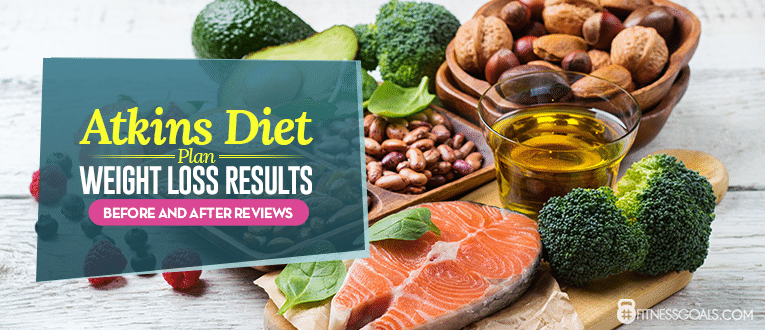
The Vegetarian Diet Pyramid provides an outline for a healthy, traditional vegetarian lifestyle. The pyramid is widely accepted in Asia and all over the world. It is also used to promote a vegetarian lifestyle. However, the pyramid does more than just guide food consumption. It also serves as a resource for information on how to plan plant-based meals.
Vegetarian-friendly meals
The vegetarian diet pyramid suggests that the fruits and veggies should be the largest portion of your plate. They should be organically grown, but you should also consider including other fruits and veggies, such as legumes. You should include at least three servings of green vegetables in your meals, such as capsicums, broccoli, kale and capsicum. You should also eat lots of whole grains.

Serving size
The vegetarian diet pyramid is designed to give you the best balance of nutrients. There are five main food groups. Each corresponds to a specific serving size. It is encouraged for vegetarians to replace meat and other animal products with beans or legumes, nuts, or other plant-based food. However, a vegetarian diet pyramid may differ from the USDA food guide pyramid because some food groups are excluded.
Common nutrients lacking in a vegetarian diet
There are many nutrients that vegetarians may not have access to. These include iron and zinc. Even though these minerals are available in plants, the body is unable to absorb them. Include vitamin C in your daily routine to enhance absorption. Vitamin C can increase your body's ability absorb non-animal sources (non-animal) of iron and zinc. You can increase your availability of these minerals by soaking grains and legumes.
Sources of nutrients
Vegetarians must eat a variety to meet their daily nutritional needs. Vegetarians need to eat foods rich in iron, calcium, and protein. This is because they absorb more nutrients when eaten in combination with vitamin A. These essential nutrients can be found in plants such as beans, nuts and wholegrain grains.
Health benefits
A vegetarian diet can offer the same nutrition and lack of cholesterol as a diet that is based on animal products. There are many advantages to the plant-based food system. It can also be eaten more often and provide many nutrients.

Symbolism of the vegetarian diet pyramid
The symbolism of a vegetarian diet pyramid is a simple but effective tool for helping vegetarians to make dietary adjustments. Symbols are used to represent food groups, such as fruits or vegetables. These foods provide comparable nutrition to animal products, but don't have cholesterol. It doesn't mean that vegetarians have to eat all the foods on the pyramid every day. The symbols allow vegetarians to choose the best food.
FAQ
These are five tips to help you lead a healthy lifestyle.
Are there 5 ways to have a healthy lifestyle?
Healthy living means eating right, exercising regularly and getting enough sleep. It also involves managing stress and having fun. Eating well means avoiding processed foods, sugar, and unhealthy fats. Exercise can help you burn calories and strengthen your muscles. Getting enough sleep improves memory and concentration. Management of stress can help reduce anxiety levels and depression. And finally, having fun keeps us young and vibrant.
What should I eat?
Take in lots of fruits and veggies. They are high in vitamins and minerals, which can help strengthen your immune system. Also, fruits and veggies are rich in fiber. This makes them filling as well as helping with digestion. Try to include at least five servings of fruit and veg per day.
Get plenty of water. Water flushes toxins from your body and helps you feel full between meals. Drink about eight glasses each day.
Eat whole grains instead of refined ones. Whole grains retain all nutrients including B vitamins, iron and zinc as well as calcium, magnesium, calcium, protein, and magnesium. Refined grains are stripped of some of their nutritional value.
Sugary drinks should be avoided. Sugary drinks are loaded with empty calories and contribute to obesity. Instead, opt for water, milk, or unsweetened tea.
Avoid fast food. Fast food lacks nutritional value. Fast food may be delicious, but it will not give you the energy that you need to perform your tasks properly. Avoid soups, sandwiches and other unhealthy options.
Reduce your alcohol intake. You should limit your alcohol intake as it contains empty calories and can lead to poor nutrition. Limit the amount of alcohol you consume in a given week to no more than 2 alcoholic beverages.
Reduce your consumption of red meat. Red meats are high-in saturated fats and cholesterol. Instead, choose lean cuts of beef and pork, lamb, chicken or fish.
Improve immunity with herbs and supplements?
To boost immunity function, herbs and natural remedies are available. There are many natural remedies that can boost immunity, including echinacea (oregano), ginger, ginkgo biloba and vitamin C.
These herbal remedies shouldn't be used to replace traditional medical treatment. Side effects include nausea, dizziness and stomach cramps.
What is the problem?
BMI stands For Body Mass Index. It is a measurement of body mass based on height and/or weight. The following formula can be used to calculate BMI.
Weight in kilograms divided with height in meters.
The result can be expressed in a number between 0 to 25. A score greater than 18.5 is considered overweight. A score greater than 23 is considered obese.
A person with 100 kg will have a BMI 22 if they are 1.75m tall and weigh 100 kg.
How do I measure body fat
The best way to measure body fat is with a Body Fat Analyzer. These devices are used to measure the percentage of bodyfat in people who desire to lose weight.
Statistics
- According to the 2020 Dietary Guidelines for Americans, a balanced diet high in fruits and vegetables, lean protein, low-fat dairy and whole grains is needed for optimal energy. (mayoclinichealthsystem.org)
- In both adults and children, the intake of free sugars should be reduced to less than 10% of total energy intake. (who.int)
- WHO recommends reducing saturated fats to less than 10% of total energy intake; reducing trans-fats to less than 1% of total energy intake; and replacing both saturated fats and trans-fats to unsaturated fats. (who.int)
- WHO recommends consuming less than 5% of total energy intake for additional health benefits. (who.int)
External Links
How To
How to Keep Your Body Healthful
This project had the main purpose of providing suggestions for how to maintain your health. To maintain good health, the first step is to learn what you can do. We had to learn what was good for our bodies in order to do this. After looking at the various methods people use to improve their health, it became clear that there were many ways that we could benefit. Finally, these tips helped us to stay happier and healthier.
We started by looking at what food we eat. We discovered that some foods are not good for us and others are better. We now know that sugar can be dangerous because it can cause weight gain. On the other hand, fruits and vegetables are good for us because they contain vitamins and minerals that are essential for our bodies.
Next we considered exercise. Exercise can help our bodies become stronger and give them more energy. It can also make us feel happier. There are many exercises you can do. You can do many things like running, swimming, dancing and lifting weights. Yoga is another way to improve your strength. Yoga is a great workout because it increases flexibility and improves breathing. It is important to avoid junk food, and to drink plenty of water, if we wish lose weight.
Finally, let's talk about sleeping. Sleep is an essential part of our daily lives. Lack of sleep can lead to fatigue and stress. This can lead to headaches, back pain and other health problems, such as depression, heart disease, diabetes, heart disease, and obesity. It is essential that we get sufficient sleep in order to keep our health good.